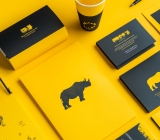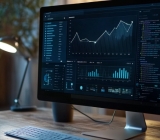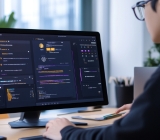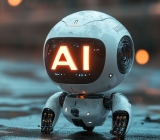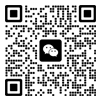E-commerce UI Design: Creating an Immersive Shopping Experience
In the wave of digital commerce, e-commerce UI design has become one of the key factors determining the success or failure of enterprises. It is not just about beautifying the interface, but also a deep integration of user experience, brand image, and business conversion.
The Core Value of E-commerce UI Design
Enhancing User Delight
The primary task of e-commerce UI design is to reject mediocrity and create a delightful browsing experience for visitors. Through reasonable color matching, a concise layout, and smooth interaction, it can instantly capture users' attention. For example, a combination of soft and vivid colors can create a comfortable visual experience, making users feel happy while browsing products. At the same time, a simple and clear navigation bar and clear product classification enable users to quickly find the products they need, reducing the time cost of searching and enhancing the overall shopping experience.
Improving the Conversion Rate
Planning the UI design from a global perspective can effectively guide users' shopping behavior. The design of the product detail page is a crucial part. Through exquisite picture display, detailed product parameter descriptions, and the presentation of authentic user reviews, it can enhance users' trust in the product. For instance, high-resolution product images allow users to clearly see the product details, and dynamic displays or 3D modeling enable users to observe the product from different angles, simulating a real shopping experience. Moreover, the "Add to Cart" and "Buy Now" buttons, set reasonably with eye-catching colors and appropriate positions, can stimulate users' purchasing desire and improve the conversion rate.
The Key Areas of E-commerce UI Design
Store Decoration Design
Store decoration is like the facade of a physical store and is the first impression that attracts users. A unique store style can showcase the brand's personality. Whether it is a simple and fashionable style, a retro and literary style, or a technological and futuristic style, it should be in line with the brand positioning. For example, a brand targeting young and fashionable consumers can use bright and lively colors and simple lines to create a youthful and energetic atmosphere; while high-end luxury brands can use low-key and luxurious colors and exquisite layout to highlight the brand's noble quality. At the same time, a reasonable spatial layout should take into account sections such as the homepage carousel, product recommendation area, and promotional activity area, ensuring that users can obtain important information in a timely manner.
Product Main Image Design
The product main image is the first visual contact point for users with the product and directly affects their clicking desire. An excellent product main image should highlight the product subject, with a clean and simple background to avoid too many distracting elements. At the same time, through techniques such as lighting effects and color contrast, the characteristics and advantages of the product can be displayed. For example, for clothing products, the main image can show the overall effect of the model wearing the clothes, highlighting the style and fit; for electronic products, the main image can focus on showing the product appearance and unique function buttons to attract users to learn more.
Live Streaming Background Design
With the rise of live streaming e-commerce, the design of the live streaming background has also become crucial. The live streaming background should match the live streaming theme and product style to create a suitable atmosphere. For example, a beauty live stream can use warm and soft lighting and a delicate makeup table layout as the background to give users a professional and refined feeling; while an outdoor products live stream can choose a background full of natural elements, such as green grass and a blue sky, allowing users to better associate with the product's usage scenarios. At the same time, the brand logo and product display area should be reasonably set in the live streaming background to increase brand exposure.
Product Detail Page Design
The product detail page is the core area for users to learn about product information. In addition to the previously mentioned picture display and parameter description, content such as product usage scenario pictures and product advantage comparison pictures can also be added to enable users to have a more comprehensive understanding of the product. For example, the detail page of a skin care product can display the before and after skin comparison pictures of users to intuitively reflect the product's effect; the detail page of a smart watch can compare its functions with those of other similar products to highlight its own advantages. In addition, adding some friendly reminders, after-sales service instructions, and other content can enhance users' confidence in purchasing.
E-commerce Poster Design
E-commerce posters are important tools for brand promotion and promotional activity promotion. Poster design should have a strong visual impact and be able to stand out among a large amount of information. Use large fonts, vivid colors, and unique creative elements to convey the core message. For example, in a promotional activity poster, use eye-catching fonts to highlight the discount rate and activity time, and match it with relevant product images and dynamic elements to attract users' attention. At the same time, the poster design should be consistent with the brand image to strengthen the brand memory points.
3D Modeling/Video
3D modeling and video technologies have brought a new experience to e-commerce UI design. 3D modeling allows users to observe products from all angles and in all directions, providing a more realistic shopping experience. For example, for furniture products, through 3D modeling, users can freely rotate and zoom the model to view every detail and structure of the furniture. And videos can dynamically display the product usage process, function demonstrations, and other content. For example, a kitchen appliance can display its operation process and cooking effect through a video, allowing users to more intuitively understand the product's practicality.
E-commerce UI design is a comprehensive field. Through the careful design of each key link, it can create an immersive shopping experience, improve user satisfaction and brand competitiveness, and bring a broader business prospect for e-commerce enterprises.
-
Common UI Design Problems and Solutions
Date: Sep 10, 2025 Read: 121
-
UI Design: The Visual Language and Interactive Art of Digital Products
Date: May 13, 2025 Read: 224
-
E-commerce UI Design: Creating an Immersive Shopping Experience
Date: Apr 14, 2025 Read: 243

